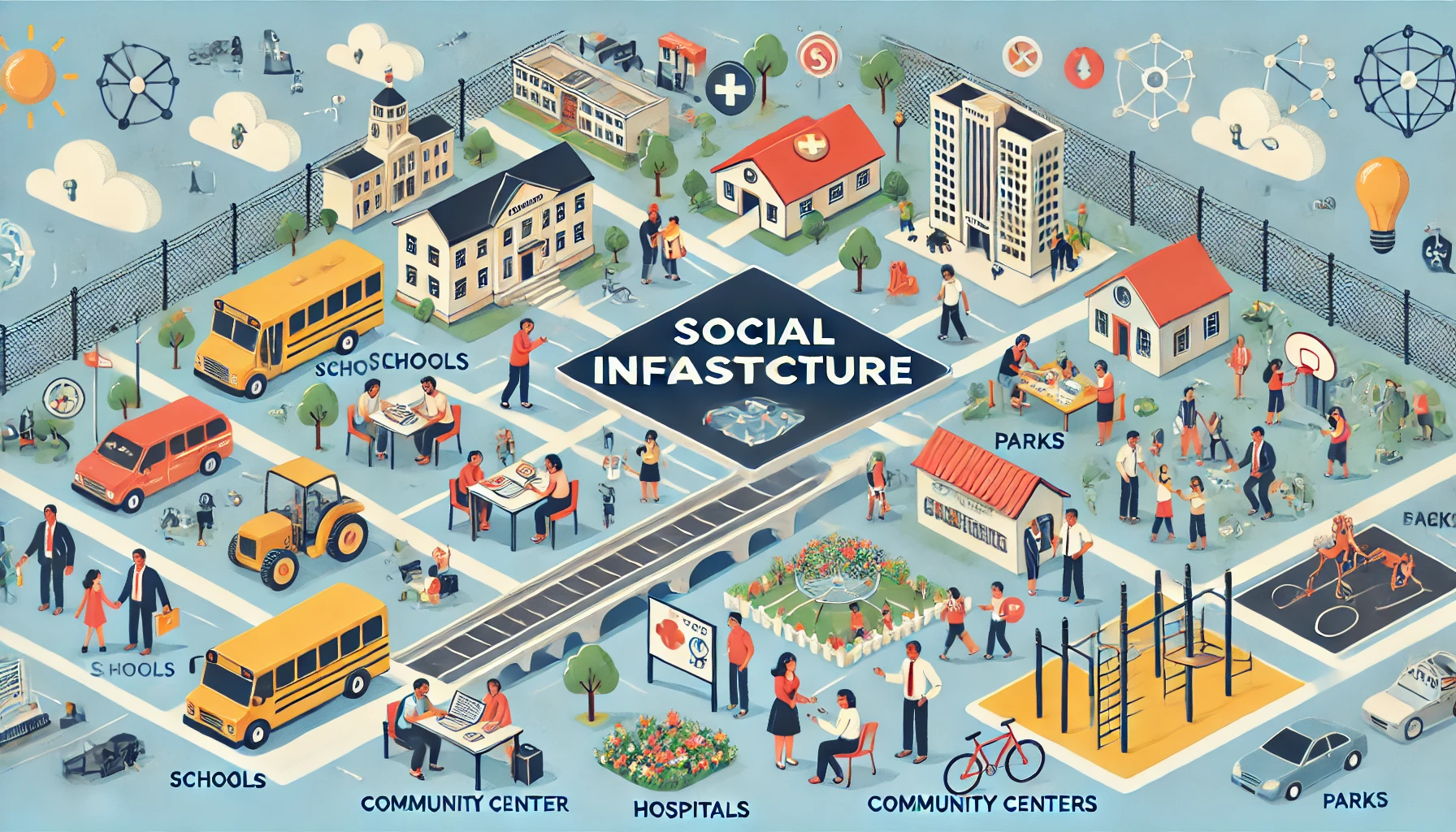Social infrastructure refers to the institutions, facilities, and systems that support a population’s social, educational, health, and cultural needs. Unlike physical infrastructure, which primarily focuses on economic functions, social infrastructure emphasizes improving quality of life and enhancing social well-being.
Components of Social Infrastructure:
- Educational Facilities: Schools, Colleges and Universities, Vocational and training centers, libraries.
- Healthcare Facilities: Hospitals, Clinics, Health Centres, Community Centres, Mental Health Facilities.
- Public Safety and Security: Police Stations, Fire Stations, Emergency Services
- Social Services: Childcare centers, Elderly care facilities, Community centers, Shelters, and Housing Assistance.
- Cultural and Recreational Facilities: Museums, Theaters, concert halls, sports facilities, parks and public places.

Importance of Social Infrastructure:
- Quality of Life:
- Social infrastructure directly impacts individuals’ well-being and quality of life by providing access to essential services like education, healthcare, and recreational facilities.
- Social Equity:
- It plays a critical role in promoting social equity by ensuring that all individuals, regardless of their socioeconomic status, have access to basic services and opportunities.
- Economic Benefits:
- A well-developed social infrastructure fosters economic growth by fostering a healthy, educated, skilled workforce. This, in turn, attracts investment and improves productivity.
- Community Development:
- Social infrastructure helps build strong communities by providing spaces for social interaction, cultural expression, and civic engagement.
- Health and Well-being:
- Access to healthcare facilities, recreational areas, and mental health services contributes to the overall health and well-being of the population, reducing healthcare costs and improving life expectancy.
- Resilience and Adaptability:
- Social infrastructure enhances the resilience of communities by providing support systems during crises, such as healthcare during pandemics or emergency shelters during natural disasters.
Social infrastructure is vital for the overall development and well-being of societies. It provides the foundation for human capital development, social cohesion, and community resilience. Investing in and maintaining robust social infrastructure is essential for promoting equitable and sustainable development, ensuring that all individuals have the opportunity to thrive and contribute to their communities.

